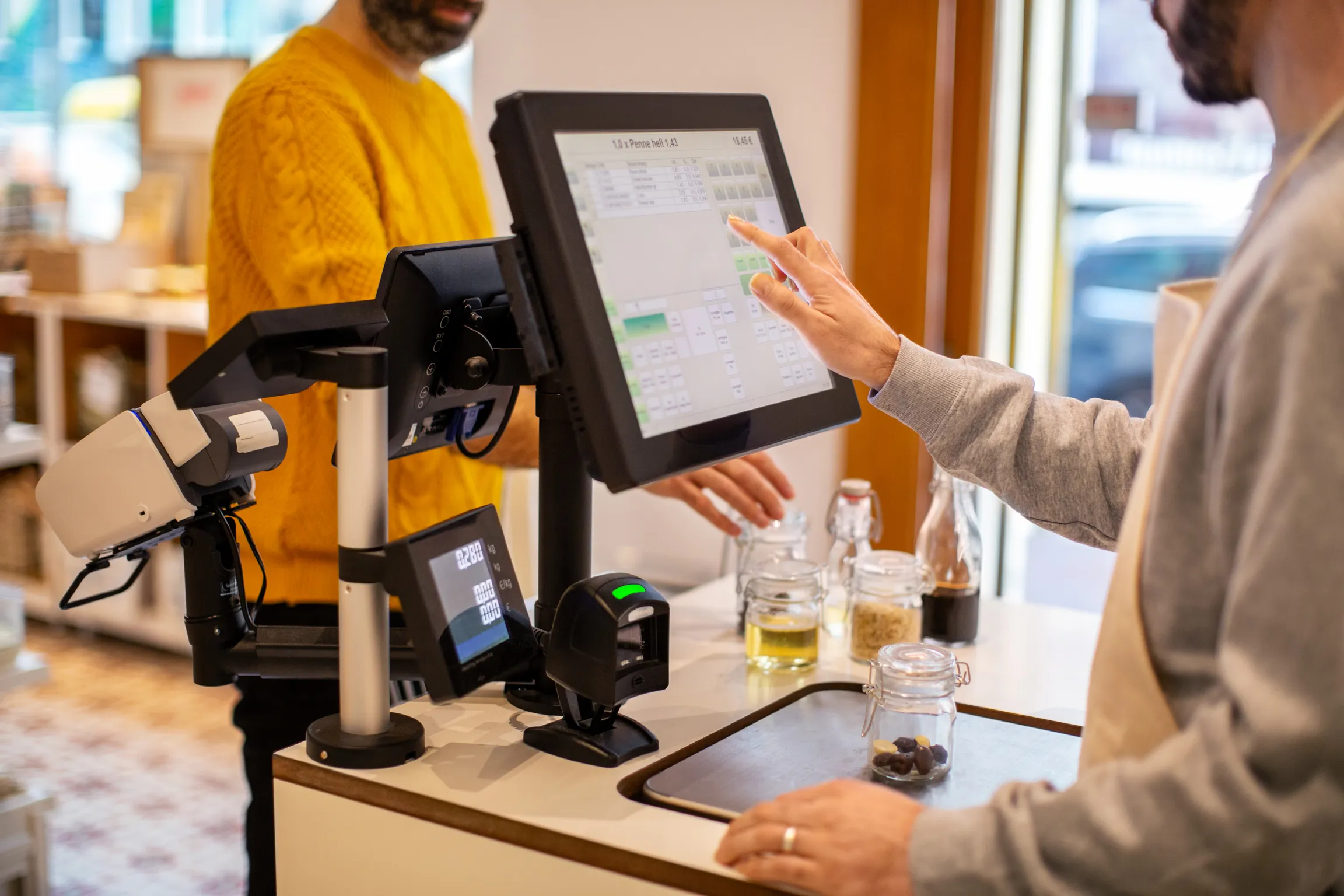Waiting time is a factor that can easily transform an otherwise nice restaurant experience into a nightmare. When customers are eating in, taking out or using the drive-thru, any form of delay can cause dissatisfaction, affect online ratings and reviews and decrease the chance of them coming back.
Any restaurant willing to succeed in a competitive market should be concerned with how to achieve fast and accurate services, and a significant portion of that answer begins with the point-of-sale (POS) system.
The POS is not just a cash register anymore. It is an online platform that links food ordering, preparation, and payments. Being well optimized and synchronized, it can save a lot of time and enhance guest satisfaction.
One of the most effective methods of ensuring that needless wait times are eradicated and your restaurant has a higher degree of efficiency is the streamlining of how your POS communicates with the kitchen, staff, and customer service channels.
Improving Order Accuracy and Flow
Among the initial points or aspects where POS coordination is beneficial is in the enhancement of order accuracy. When the person who takes the orders is a server or a cashier and they do it manually or use an old system, errors will occur more frequently
It has integrated POS, which means the orders are sent to the kitchen display system in real-time, eliminating the chance of miscommunication and delays.
The provision of unambiguous data to the kitchen in a timely manner enables chefs to start working on the food preparation right away, contributing to a faster and more accurate shipment of orders.
Better accuracy also prevents the time lost on remakes. In case wrong orders are dispatched, it not only frustrates the customer, but also disrupts other kitchen workers who have to halt their work process in order to correct the error.
An updated POS system reduces such interruptions by making sure that the kitchen is equipped with what they require initially. This more fluid coordination implies that the processing of orders is faster and the satisfaction of customers is ensured.
Enhancing Communication Between Front and Back of House
Conversations between front-of-house and back-of-house staff need to be fast. Once your POS system is integrated in such a way that both ends are in communication, then servers and kitchen personnel do not have to depend on verbal communication as well as paper tickets.
The system allows any modifications to orders whether in terms of allergies or special requests to be effectively communicated without any delays or confusions. This efficient process will aid in avoiding unnecessary back and forths which consideration adds to the wait time and consequently, the expenses.
Quick service settings such as drive-thrus are some of the settings where clear communication is most important. A drive thru system which can be connected with the main POS provides correct queuing of orders and delivering of orders to the correct stations at the correct time.
Having the drive-thru, counter and kitchen all on the same system means that there is less friction and that the entire service process is faster.
Optimizing Order Routing and Prioritization
The other advantage of improved POS coordination is that there is the capacity to route and prioritize orders in a more efficient manner. In a conventional restaurant, various orders may be sent to various kitchen experts, grill, fryer or cold prep to mention a few.
A modern POS system integrated with a kitchen display system can automatically send components of an order to the appropriate station and keep a single clock running on when everything is finished.
This guarantees that everything that composes a meal is prepared simultaneously and no meal remains waiting to be joined by other meals.
It is also easier to coordinate high-volume periods because of this coordination. When it gets busy the system can automatically tag priority orders, queue tickets by estimated prep time or can notify staff of timing problems.
Kitchen managers and servers no longer have to manually juggle orders, the system will keep everything in motion, which helps clear backlogs and long wait times by customers during rush periods.
Reducing Bottlenecks in Payment and Checkout
Wait time does not just occur during food preparation, but also at the checkout point. Slow or old-fashioned payment process is as irritating as a prolonged waiting time for the food.
An integrated POS enables quicker and more versatile payment choices, such as contactless, mobile wallets, and tableside checkout. All these features facilitate quick payment by the guests who then leave without wasting time unnecessarily.
Also, payment integrated with the rest of the POS serves to accelerate servers in turning tables. In fast-casual or quick service restaurants, particularly those with drive-thru windows, a rapid checkout is necessary to keep the lines moving.
An integrated drive thru system, combined with the POS can help ensure that less time is taken by each car at the window, which allows the restaurant to serve more customers in an hour, and also enhances the overall throughput.
Leveraging Data to Refine Processes
The contemporary POS systems are not mere transactional processing machines, but they gather useful insights. Restaurants can use the proper tools to examine the duration of various stages in the order cycle, as well as locate the places where the cycle slows down, and determine trends over time.
This information can help managers to plan staff scheduling, anticipate rush times and modify work processes to maintain a smooth flow.
Having said that, here are some examples of how the data can help: say, it shows that particular items on the menu always require more time to be ready, thus holding the whole line.
Armed with this knowledge, managers can either decide to prepare some ingredients ahead of time, re-engineer order routing in the kitchen, or introduce menu modifications that alleviate congested stations. When these improvements are coordinated using the POS, the service is quicker and there is improved management of resources.
Integrating Online Orders and Third-Party Platforms
Restaurant operations are further complicated by online and delivery orders. When these orders are processed manually or out of the main POS, this usually leads to confusion, duplicate entries or tickets being missed, which both on-site and off-site customers will have to wait longer.
A completely integrated POS can be connected to online ordering systems, apps and even third-party delivery companies, where all the tickets are pulled into a single, centralized location.
This will not only enhance accuracy of orders but will also aid kitchens to balance between in-house and off-site demand. An integrated kitchen display system tied into the POS can mark online or delivery orders as a separate priority, to assist kitchen staff in prioritizing more effectively.
And, regardless of whether the customer wants dine-in, takeout or drive-thru, all the orders are handled under a single system, which minimizes the mayhem and accelerates fulfillment system-wide.
Training Staff to Use the POS System Effectively
However, technology does not ensure efficiency, and this is also determined by the way your team utilizes it. The perfectly coordinated POS system can never be better than the people who use it.
That’s why comprehensive training is essential. Personnel should know not only how to enter orders, but also how the system directs those orders, and how it interfaces with the kitchen display system along with how to make alterations or correct mistakes.
They should also be trained on the non-technical aspects, like flagged items communication to the kitchen, the ability to read screen updates fast enough, as well as response to volume adjustment depending on the reporting features of the POS.
When every member of the team understands how to operate the system, it will lead to great coordination, faster decision making and reduced wastage of time during peak hours.
One of the best methods of increasing customer satisfaction and enhancing restaurant performance entails decreasing wait time. A well-coordinated POS system in your ordering, kitchen preparation, drive thru service and checkout will assist in removing delays and enhancing precision and flow of the whole dining process.
With your POS, tools such as integrated drive thru system and kitchen display system can help your communications run smoother and allow your operations to be more efficient.
When it comes to POS coordination, the savings of time is only the beginning of enhancing customer experience by allowing restaurants to serve more people with fewer errors, less stress, and much more consistently.
Some 25 percent of the restaurants can veto the idea of investing in an improved POS integration, given the highly time-sensitive nature of the business, but it is a move that will reap dividends in the long term.


